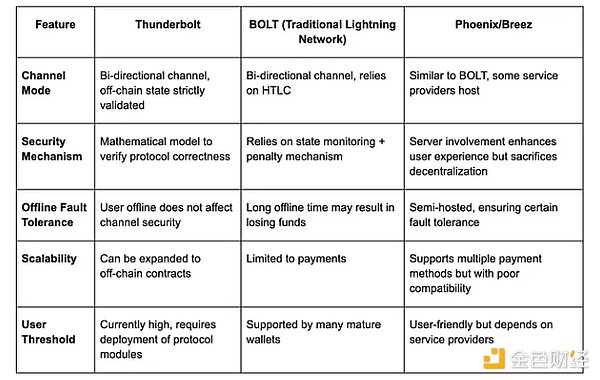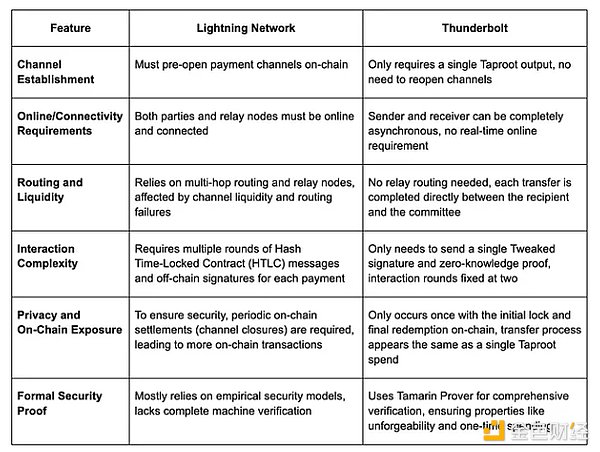Author: Ac-Core, researcher at YBB Capital
1. Why can't you buy coffee with Bitcoin?
When most people think of Bitcoin, the first thing that comes to mind is its "decentralized" and "immutable" characteristics. But if you really want to use it to buy a cup of coffee, you will soon encounter an embarrassing problem: the time to wait for transaction confirmation is even longer than the time to wait for coffee, and sometimes the transaction fee is even higher than the coffee itself. Assets on Bitcoin are still largely "immovable" - most users just hold; you can't take loans, combine assets, or interoperate.
The script structure of Bitcoin is extremely conservative, which limits most off-chain interaction scenarios. Its original design goal was not to process tens of thousands of transactions per second. However, the actual demand is right in front of us - people want to be able to use Bitcoin, even if it's just to buy game skins or give rewards to video creators, and they don't want to wait ten minutes for it.
2. Lightning Network: A double-edged sword
The Bitcoin mainnet is like a highway, and the Lightning Network is a paid fast lane built next to it. Its core concept is a pragmatic compromise to the throughput limit of the main network: because on-chain transactions face speed bottlenecks, the system no longer insists on recording every transaction on the chain, but allows users to open dedicated "payment channels" for high-frequency transactions, and settle the final state on the blockchain only when the channel is closed. This is similar to friends taking turns to pay the bill and settling the bill after a few outings, rather than transferring money after each meal. The Lightning Network is essentially a network woven from thousands of such payment channels.
However, this seemingly elegant system faces many practical challenges. The first is that the threshold for channel setting is high-users must lock funds in advance to establish a channel, which means that you need to establish a dedicated connection in advance to trade with anyone. The second is the complex routing problem: if there is a lack of direct channel between user A and user B, even if there is an indirect route like A-C-B, if the intermediate channel is insufficiently funded or the node is unavailable, the transaction may still fail. More seriously, there is a security risk: users must stay online to prevent counterparties from cheating by submitting expired transactions when closing the channel, which puts unrealistic operational requirements on ordinary users.
Although the Lightning Network has been online for many years, these structural problems limit its application in the real world. Public data shows that the total value locked in the Lightning Network is still only about $100 million - a negligible number compared to Bitcoin's trillion-dollar market value. This has triggered an industry-wide thinking: Is it possible to build a better off-chain payment protocol to break through these bottlenecks?
According to ChainCatcher on April 15, HSBC revealed in an official press release that Bitcoin Thunderbolt represents the most significant technical upgrade of Bitcoin in nearly a decade. Thunderbolt can be seen as "Lightning Network 2.0", but it is not just an upgrade, but a fundamental redesign of Bitcoin's off-chain interaction paradigm.
3. What is the Thunderbolt protocol?
Bitcoin Thunderbolt is a soft fork upgrade built directly on the bottom layer of Bitcoin. Unlike the compromise of the second-layer network or cross-chain bridge, Thunderbolt introduces protocol-level changes on the Bitcoin mainnet, fundamentally enhancing scalability, transaction performance, and programmability.
Performance layer: Nubit uses UTXO bundling technology to significantly optimize Bitcoin's traditional transaction model. Bitcoin's current design processes each UTXO individually, which limits throughput, while UTXO bundling technology can aggregate multiple UTXOs for simultaneous processing. This transaction data compression technology can increase processing speed by nearly 10 times without affecting on-chain security.
Programmability: Thunderbolt reintroduces and extends the OP_CAT opcode, which originally existed in early Bitcoin versions but was later removed. OP_CAT allows data connection, enabling developers to build more advanced script logic and deploy decentralized applications (dApps) directly on Bitcoin's base layer without relying on sidechains, Rollups, or cross-chain bridges.
Asset protocol layer: Nubit also introduced a unified token standard called Goldinals, which is based on zero-knowledge proofs and state commitments. The framework supports the issuance and verification of native Bitcoin tokens without relying on external trust or complex bridges. It integrates fragmented protocols such as BRC-20, Runes, and Ordinals through an on-chain automated market maker (BitMM), fully supporting trustless transactions and verification within the Bitcoin ecosystem.
Unlike traditional scaling methods such as sidechains, Plasma, Rollups, or asset packaging through bridges, Nubit follows the "native mainnet scaling" path. It integrates solutions such as BitVisa for decentralized identity and credentials. Whether it is transaction compression, smart contract enablement, or on-chain transactions, all functions run directly on the Bitcoin mainnet using native BTC.
3.1 Core Mechanism Analysis
Based on the paper "Stateless Verifiable Execution Layer for Bitcoin Meta Protocol" (Reference 1), Bitcoin Thunderbolt is similar to the Lightning Network and aims to solve the problem of long confirmation time on the Bitcoin mainnet. While both are focused on increasing speed and reducing costs, their design philosophies differ significantly:
The Lightning Network is centered around payment channels and is optimized for peer-to-peer transactions only. It lacks programmability, involves complex channel setup and maintenance, and has limited scalability.
Thunderbolt, developed by Nubit, provides a programmable off-chain protocol capable of Turing-complete operations, enabling the creation of complex stateful assets, liquidity protocols, and financial applications.
Main Innovations:
Adjustable Multi-Party Signatures
Imagine a Bitcoin signature split into two parts: Alice holds half and the committee holds the other half. Each time funds are transferred, both parties add a "key adjustment"—known only to the new recipient—so that they can reconstruct the full signature offline without direct communication.
Asynchronous Committee Ledger:
A group of nodes (e.g. 4n+1) maintains consensus on ownership. Even if some nodes fail, the system will still function as long as the majority of nodes are online. These nodes cannot transfer funds on their own - they simply co-sign and record ownership, thus maintaining decentralization and security.
Finalization based on atomic swaps
On-chain redemption involves three atomic steps:
1. Alice and the committee spend the original UTXO to transfer funds to the committee;
2. The committee locks the same amount of funds in a joint vault that only Zenni and the committee can access;
3. Zenni uses a new two-part signature to complete the redemption.
This process ensures that neither party can cheat or abandon the process.
3.2 Thunderbolt's Protocol Design and Technical Highlights
Non-interactive recursive signature delegation:
Thunderbolt uses adjustable Schnorr threshold signatures, eliminating multiple rounds of messaging. Only one key-adjusted signature needs to be sent for each transfer, significantly reducing communication and uptime requirements.
New locks for each hop
A new key-based signature is introduced for each transfer. Old keys become invalid, preventing signature reuse and enhancing security.
Single on-chain tracking
The only on-chain operation is the initial lock. All subsequent transfers are performed off-chain, and the final on-chain redemption is only performed at the end of the transaction. Compared to the frequent channel operations of the Lightning Network, Thunderbolt not only improves efficiency but also improves privacy.
Offline resiliency
The committee can continue to process redemptions or transfers even if Alice or Zenni is offline - no time locks or forced shutdowns are required.
Formal verification with machine-proven security
Each key protocol step is formally verified using Tamarin Prover, ensuring mathematically proven security guarantees - not just theoretical promises.
Thunderbolt represents a fundamental rethinking of how Bitcoin supports high-throughput, programmable, and trust-minimized off-chain interactions, while maintaining the core principle of decentralization.
4. How does Thunderbolt differ from existing Lightning Network solutions?
Now let’s compare Thunderbolt to existing solutions such as BOLT Protocol, Breez SDK, and Phoenix to understand the specific improvements it introduces.

Main differences:

Thunderbolt stands out mainly in terms of security and theoretical soundness. It is one of the few solutions that can claim the following advantages:
But it also has obvious disadvantages:
Deployment complexity: Running Thunderbolt requires a full protocol stack, which is difficult for ordinary wallet users to adopt.
Main chain compatibility limitations: Bitcoin's scripting language is extremely limited. Thunderbolt must break through these limitations, which increases the complexity of implementation.
Lack of ecosystem support: Unlike BOLT, which has support from many wallets and nodes, Thunderbolt is still in the early stages of research and development.
5. Thunderbolt's potential impact: a catalyst for BTCFi?
So is Thunderbolt the best solution for BTCFi? A bold but sensible view might be:
In theory, Thunderbolt is the best solution for BTCFi, but in practice, it is still in the alpha stage - just like Ethereum's original 2.0 white paper: visionary, but not yet ready for large-scale production deployment. Based on current observations, Thunderbolt's development may follow the following three potential paths:
1. Rollup layer integration: DeFi engine for Bitcoin Layer2
Given the limited scalability of Bitcoin's base layer, Thunderbolt can evolve into a modular off-chain execution layer in Bitcoin Layer 2 solutions such as BitVM, Nomic, or BOB. It can be thought of as a programmable contract engine embedded in Bitcoin Rollup.
Example:
BOB may integrate Thunderbolt's payment channels for native BTC transactions.
The RGB ecosystem can adopt Thunderbolt's state management logic.
BitVM supports advanced logic and can use Thunderbolt as a smart contract standard.
Babylon, Bitlayer and similar systems can embed Thunderbolt as an off-chain contract execution module.
2. Build an independent parallel ecosystem
Thunderbolt may follow in the footsteps of the Lightning Network and develop its own infrastructure: nodes, operators, aggregators, and possibly even Thunderbolt-LSP (liquidity service provider). With the support of Nubit and early Bitcoin miners, its soft fork solution - UTXO bundling and OP_CAT - enables Thunderbolt to natively support protocol assets such as BRC-20, Runes and Ordinals.
In this case, Thunderbolt can develop into a mature ecosystem with the following features:
Thunderbolt Wallet (similar to Phoenix)
Thunderbolt Node (light node for channel operations)
Thunderbolt DEX (off-chain order matching)
Thunderbolt AMM (off-chain liquidity pool)
3. Replaced by simpler solutions
The future of Thunderbolt is uncertain. It may eventually be replaced by simpler or more efficient alternatives:
BitVM can provide a more scalable contract execution model.
Cross-chain ZK technology may make it possible to deploy fully trusted BTC on other chains.
The new native Bitcoin protocol can unify payments, lending, and contracts into a seamless system.
The Real Impact: Off-Chain Composability
Thunderbolt’s biggest breakthrough is not just in payments, but in that it introduces off-chain composability of Bitcoin assets — a concept that has been critical to Ethereum’s DeFi boom. Ethereum’s success is due to its integrated development stack: Solidity, Hardhat, Ethers.js, and Metamask. Thunderbolt can provide a similar foundation for Bitcoin.
Its core innovations — OP_CAT and UTXO Bundling — are particularly exciting:
OP_CAT enables native programmability in Bitcoin for the first time.
UTXO bundling compresses transaction data, enhancing on-chain throughput — similar to Ethereum rollups.
Together, these advances advance our vision of unifying the Bitcoin ecosystem’s protocols and enabling trustless asset exchange through BitMM — all without bridges or wrapped tokens. Still, Thunderbolt is closer to a "powerful math paper" than a ready-to-use developer stack.
 Jixu
Jixu
 Jixu
Jixu Davin
Davin Hui Xin
Hui Xin Jasper
Jasper Joy
Joy Davin
Davin Aaron
Aaron Jasper
Jasper Davin
Davin Jasper
Jasper